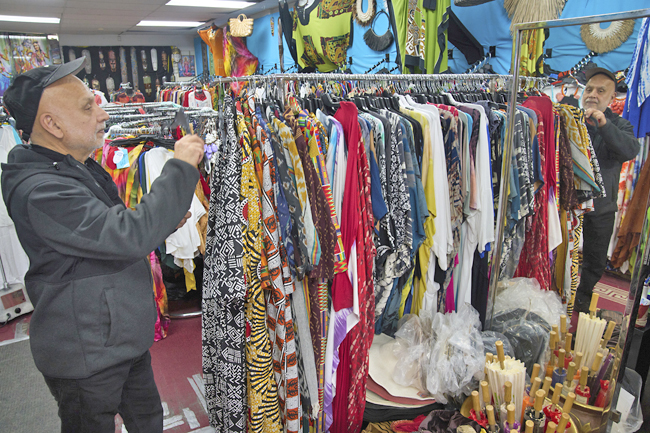NEW YORK (AP) – Sending children back to school in new sneakers, jeans and T-shirts is likely to cost United States (US) families significantly more this fall if the bespoke tariffs US President Donald Trump put on leading exporters take effect as planned, American industry groups warn.
About 97 per cent of the clothes and shoes purchased in the US are imported, predominantly from Asia, the American Apparel and Footwear Association said, citing its most recent data. Walmart, Gap Inc, Lululemon and Nike are a few of the companies that have a majority of their clothing made in Asian countries.
Those same garment-making hubs took a big hit under the president’s plan to punish individual countries for trade imbalances. For all Chinese goods, that meant tariffs of at least 54 per cent. He set the import tax rates for Vietnam and neighbouring Cambodia at 46 per cent and 49 per cent, and products from Bangladesh and Indonesia at 37 per cent and 32 per cent.
Working with foreign factories has kept labour costs down for US companies in the fashion trade, but neither they nor their overseas suppliers are likely to absorb new costs that high.
India, Indonesia, Pakistan and Sri Lanka also got slapped with high tariffs so aren’t immediate sourcing alternatives.

“If these tariffs are allowed to persist, ultimately it’s going to make its way to the consumer,” said president and Chief Executive Officer of the American Apparel and Footwear Association Steve Lamar.
Another trade group, Footwear Distributors and Retailers of America (FDRA), provided estimates of the price increases that could be in store for shoes, noting 99 per cent of the pairs sold in the US are imports. Work boots made in China that now retail for USD77 would go up to USD115, while customers would pay USD220 for running shoes made in Vietnam currently priced at USD155, the group said.
FDRA President Matt Priest predicted lower-income families and the places they shop would feel the impact most. He said a pair of Chinese-made children’s shoes that cost USD26 today will likely carry a USD41 price tag by the back-to-school shopping season, according to his group’s calculations.
PREPARING FOR A MOVING TARGET
The tariffs on the top producers of not only finished fashion but many of the materials used to make footwear and apparel shocked US retailers and brands. Before Trump’s first term, US companies had started to diversify away from China in response to trade tensions as well as human rights and environmental concerns.
They accelerated the pace when he ordered tariffs on Chinese goods in 2018, shifting more production to other countries in Asia. Lululemon said in its latest annual filing that 40 per cent of its sportswear last year was manufactured in Vietnam, 17 per cent in Cambodia, 11 per cent in Sri Lanka, 11 per cent in Indonesia and seven per cent in Bangladesh.
Nike, Levi-Strauss, Ralph Lauren, Gap Inc, Abercrombie and Fitch and VF Corporation, which owns Vans, The North Face and Timberland, also reported a greatly reduced reliance on garment-makers and suppliers in China.
Shoe brand Steve Madden said in November it would reduce imports from China by as much as 45 per cent this year due to Trump’s campaign pledge to impose a 60-per-cent tariff on all Chinese products. The brand said it already had spent several years developing a factory network in Cambodia, Vietnam, Mexico and Brazil.
Industry experts said reviving the American garment industry would be hugely expensive and take years if it were feasible. The number of people working in apparel manufacturing in January 2015 stood at 139,000 and had dwindled to 85,000 by January of this year.


